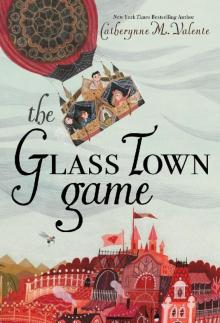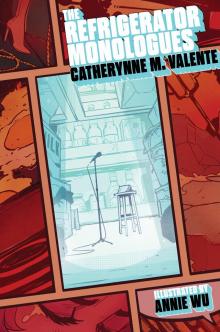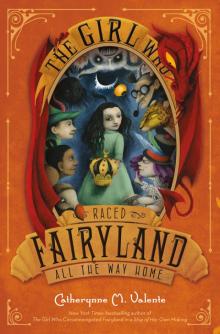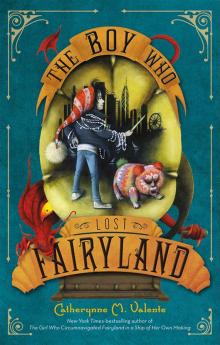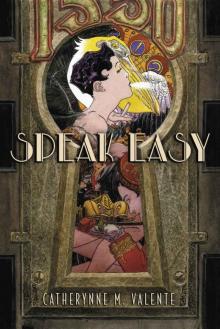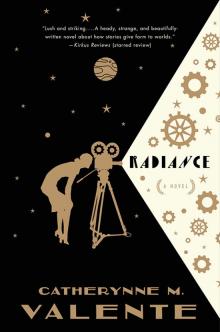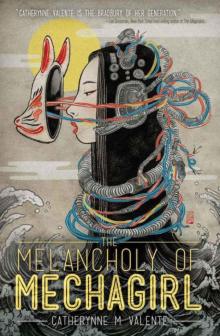


Cairo, Page 27
Max Rodenbeck
Finding their city habitable again—or at any rate in a process of reclaiming itself for the middle class—large numbers of émigrés returned. A new kind of cosmopolitanism began to flourish. International chain stores, high-tech discos, theme restaurants, and shopping centers appeared. They catered to growing numbers of tourists and a burgeoning stratum of Egyptians who were accustomed to—and had the money to pay for—slick packaging and the promise of reprieve from Cairo’s suffocating gravity. Television aired Hollywood serials and ads for air conditioning, air fresheners, and fresh air in the form of condominiums on the Red Sea and Mediterranean coasts.
Outside the middle class, the picture was different. The unzoned margins of the city buzzed with discontent. As the redistributive function of Nasser-style socialism withered, half a generation of youths found they faced a grim future. The government had promised jobs for all university graduates, but by the mid-1980s its bloated bureaucracy had reached the saturation point. It had promised housing, but its badly built, inconveniently sited projects could not keep pace with demand. Despite the fanfare about new cities in the desert, few of the poor could afford to escape Cairo’s crowded and rapidly expanding slums.
Even sex was effectively denied many, since Egypt’s strict conventions demanded marriage, and marriage required money for dowries and furnishings and apartments. A sociologist estimated the cost of a working-class marriage in the mid-1980s at 25,000 Egyptian pounds—a sum that would take the average worker ten years of piaster-pinching to save. Not surprisingly, the 1986 census showed that more than a quarter of Cairenes of marriageable age remained single. Not only was this a frighteningly high proportion for a deeply traditional society—and one that suggested widespread sexual frustration—but the evidence also showed the number was rising.
This was a generation that felt it had little to lose. Yet it responded to an unfair and confusing world not by breaking conventions but by clinging to them with ever greater tenacity. It tuned in less to television’s commercial fluff than to the prime-time preachers who claimed materialism was a Western disease. Its role models were no longer academics or politicians, but simple people it knew directly—people who had bettered themselves by making money in the Gulf, then returned home with fancy cars and wristwatches and veiled wives. At Cairo Airport you could sense the moral impact of such arrivals. You could sense the respect felt by those who went out to greet planes coming in from Jedda and Riyadh, their admiration for the fact that the émigrés had made it in the modern world without compromising their traditional outlook. Rather, they had held on to it, even reinforced it with the ultraconservative values they had found in Saudi Arabia—a country whose possession of the world’s largest oil reserves did, after all, provide striking evidence of God’s favor.
This was a generation that felt betrayed by the slogans of the past—by shrill nationalism and half-baked socialism and hollow democracy. Looking for a source of hope, Cairo’s disappointed, left-behind youth found a simple message plastered now on walls all over the city. The message said, “Islam Is the Solution.”
‘AYN SHAMS, close by the lone remaining obelisk of ancient On, was one of Cairo’s raw new districts ten years ago, a place where street patterns frayed and knotted away from the few paved roads. Its people were mainly country immigrants or newlyweds who could not afford to live closer to the city center than this hour-long bus commute. Yet on the broad scale of Cairene poverty ‘Ayn Shams ranked as fairly prosperous. Telephone wires, a few painted signs for doctors and lawyers, and the odd parked car cozied in a pajama-striped dust jacket suggested a tenuous upward mobility. The meat hanging in butcher shops looked fresh.
When I went to ‘Ayn Shams in the spring of 1989 to report on a rumpus that had cost a few injuries and arrests, locals told us that, yes, the police had come the day before. They directed us to a corner mosque where militant youths—nice, clean-minded boys, the butcher said—had been smoked out with tear gas. The youths had been holding a sit-in prayer meeting here, and had refused to budge when police megaphones told them they were surrounded. (The story in Al-Ahram was different, of course. The state-controlled newspaper said that the police had busted a gang of armed extremists who had been terrorizing the neighborhood.)
The mosque was a half-finished structure of unsurfaced brick. Only the outsized loudspeaker and hand-painted sign tacked to one facade distinguished it from neighboring houses. According to the sign, the building’s upper stories were intended to house a charity clinic. Such “Islamic” institutions were sprouting all over the city in a rebuke to the inadequacy of the state. Paid for by public donations, they promised a kind of respectability to areas like ‘Ayn Shams. They provided venues for occasions such as funerals and weddings; outlets for charity food distribution on Muslim feast days; space for classes in sewing or needlework or adult education. The cut-price clinic here would not only serve the local poor, it would give jobs to medical graduates who could not afford to open their own offices.
A cop lounged in a cane chair outside the padlocked front door of the mosque. An empty tea glass sat in the dust next to the butt of his rifle. He claimed to know nothing of any disturbance, and in fact in this quiet little alley it was hard to imagine the pop of Central Security’s tear-gas grenades. The cop watched warily as we chatted with passersby. Some said the police had hauled off dozens of people. Others declined to talk at all. One lady rushed up to us, brandishing a shopping bag. “Where is my son?” she shouted. “Where have they taken my son?”
Discouraged, we headed back to the main street. We had just turned the corner when a small boy touched my arm.
“Are you the foreign journalists?” he whispered.
I nodded.
“Come back at eight o’clock. Wait outside the butcher’s shop.”
What for?
“To meet the doctor.”
The boy was there at eight. He said nothing, just motioned for us to follow. Soon we were skulking through narrow shafts between houses, with the alleys that slanted off on either side emitting wafts of frying onion and leaky plumbing smells. There were no streetlights, but the fluorescence from occasional open windows kept the boy in view. After several turnings he vanished into a dark cul-de-sac.
When we had gathered together in the blackness and waited a minute, a new guide appeared. He was a tall youth, and his short white robe and skullcap were easy to follow as he led us deeper into the district. At length he stopped, glanced up and down the empty street, and slipped into a dimly lit stairwell. Then, having knocked a complicated knock on a door, he turned. A grin spread across his bushy first-growth beard. His eyes—the wide, glossy eyes of a Byzantine saint—sparkled with sudden complicity. This caricature of a fundamentalist, I realized, was having just as much fun as we were—so much more diverting than killing time in cafés, this playing cops and robbers in the back streets of Cairo, dressing up in a snow-white costume, and hobnobbing with the devils of the foreign press.
The door cracked, then opened. Quickly, we were inside a tiny salon, and our guide was introducing us to the Doctor. We shook hands with a stout, clean-shaven young man in civilian trousers—a necessary disguise, I guessed, since beards and galabiyyas provoked police suspicion. He looked anxious behind his heavy glasses, but he and his friends—more bearded youths crowded the doorway to check out their catch—had the good manners that come naturally to Cairenes. The foreign press was plumped onto a gilt couch and plied with soft drinks. It was begged to forgive its hosts for their precautions.
The interview began. The Doctor spoke earnestly, using formal, classical Arabic so as to give resonance to his words—and maybe to show that he had earned his Ph.D. (in veterinary medicine, as it happened, which fitted what sociologists described as the “profile” of the new breed of Islamic radical: boys of poor background with a degree in sciences that had failed to translate into upward mobility). He told us his name was Dr. Ala’ Muhieddin and explained that he was the spokesman of the Islamic League. The leag
ue, he said, was a society of youths seeking to return Egypt to the straight path of Islam. What did they do? They held meetings in mosques to discuss ways to help each other and spread their message. The brother who had led us here, for instance, had wanted to get married. He, the Doctor, had found him a wife, the sister of another brother.
It all sounded harmless. So why were the police after them?
Ah, said the Doctor with a smile. We are living in an age of ignorance. This government and its servants are unwitting allies of the enemies of Islam. They are continuing the plot launched by imperialism, a plot to uproot faith from the hearts of Muslims. They, like you—his eyes now drilled the foreign press—are afraid of us, because we speak the truth. They do not want the people to hear our message. That is why yesterday they came and broke the door of our mosque; why they beat and arrested some of the brothers and sisters, and shot poison gases into the House of God.
But we have other mosques, he continued, hunching forward on his chair. And if the government prevents us from doing our duty by our words, we will use our hands.
SIX MONTHS LATER, on September 11, 1989, an unmarked Peugeot crept along a crowded market street in Giza, on the other side of the city. Two men got out, stepped up behind Dr. Ala’ Muhieddin, and shot him in the head. After this the foreign press began to receive faxed messages from the Islamic League. Since the government rejected dialogue, the messages said, the league would take revenge. It was then that the game of cops and robbers turned nasty.
The next few years were tough on Cairo. Unused to real tabloid gore, the city had suddenly to cope with crime pages splattered with bombings and shoot-outs. A layer of civility seemed to peel away. There had always been a lot of armed security people on the streets, but they and their guns had always looked wilted and untended. Now bayonets gleamed; bootlaces were tied. Plainclothesmen in leather jackets peered into car windows at random checkpoints. As the amplified pitch of some mosque sermons reached hysteria, friends unlucky enough to live next to police stations reported nail-on-slate screams late in the night. The battle between the state and its fundamentalist challengers degenerated into a slugfest, a vendetta just like the bloody family feuds of the Upper Egyptian hinterlands (which was in fact where many of the principals—both hardheaded cops and hotheaded robbers—hailed from).
Both sides came off badly. The state damaged its legitimacy by twisting laws and limbs to break its opponents. The Islamists betrayed their own ideals by asserting a monopoly on religion—a monopoly that absolved them of guilt from murder or theft or intimidation. But the real victims were innocents: bystanders caught in the crossfire of police raids; tourists attacked for the sole purpose of embarrassing the state; even schoolchildren maimed in a botched bombing of the prime minister’s motorcade.
Still, Cairo never quite succumbed to the seriousness of it all. It helped that the casualty toll remained a fraction of any American city’s annual slaughter. The violence seemed so alien that many clutched eagerly at conspiracy theories. When hit men ambushed the Speaker of Parliament—machine-gunning him in front of the new Semiramis Hotel’s dining room, no less—and sped clean away on motorcycles, the denizens of many a downtown bar showed relief. These terrorists must have been foreigners, the common wisdom went: no Egyptian could have been so ruthlessly efficient. Speculation mounted as to whether the killers had been Israelis or Iranians, or perhaps even the mighty CIA. Slowly it dawned, though, that the surefooted assassins had gotten the wrong man. The one they wanted was the minister of the interior, a hard-nosed heavy whose motorcade routinely passed the Semiramis Hotel. Instead they got a lightweight, an unctuous politician who was quite expendable to the regime. So at last the bar props conceded that Cairo did indeed have homegrown terrorists. True cynics drank toasts to the assassins for recapturing Egypt’s lost martial pride.
Then there was the loony sheikh who could be seen every morning marching heedlessly through traffic near the fortresslike American embassy, muttering about the end of the world and the triumph of Islam. He jabbed at the sky with a finger, coiled around which was a green string—green being the color of Islam. Tied to the other end of the string, dragging in the dust, was a laminated Stars and Stripes. Commuters loved this distraction; I saw one taxidriver hand the holy man a flower.
More often, though, it was the killjoy fanaticism of some fundamentalists that provoked laughs, and this ridicule probably damaged their cause more than police muscle. One preacher declared that zucchini should be outlawed because of its suggestive shape. Another fatwa from an Islamist gang appeared in the papers: “The Cairo Tower is against religion and Islamic sharia law. It must be destroyed, as its shape and construction amid greenery could excite Egyptian women.” (But after the outspoken secularist Farag Foda made fun of such nonsense in a debate at the Cairo Book Fair, he was assassinated.)
Yet scorn did not translate into popular opposition. Many Cairenes sympathized with the goals if not the means of the radicals, whose pious anger struck a chord—particularly as it contrasted to the perception of the ruling class as effete, Westernized, and corrupt. There was, for instance, the joke about the fundamentalist who had been released on parole. In his first week the undercover cop tailing him declared progress: he had seen the suspect light up a cigarette. The next week was even more encouraging: the man had walked into a bar and ordered a drink. In the third week the agent filed a glowing report. “I recommend that the suspect be enlisted to work for us,” he reported. “He has taken up visiting a brothel.”
A wave of religious conservatism washed over the city. Self-declared Islamists took over student and professional unions. The crowds of faithful at Friday prayers outgrew mosques and spread onto sidewalks and streets. In my own building the tea boy in a lawyer’s office took to chanting the noon call to prayer down the stairwell. As often as not now, phone callers would challenge their respondents with an almost theatrically Islamic “Al-salāmu ‘Alaykum”—“Peace be upon you”—rather than the simple old “Allo?” More menacingly, many Muslims no longer responded if you addressed them with a straight-forward “Good morning”: the old greeting was now widely taken as being reserved for Christians. When a second passenger got into a taxi I had hired—the practice of picking up as many fares as possible being perfectly usual in those days—he bid the driver “Salāmu ‘alaykum,” then turned to me and said, “Good morning.” There was something profoundly disturbing in this casual drawing of distinctions between people—between a driver assumed to be a fellow Muslim and a passenger assumed to be a mere infidel.
Islamic decorative motifs came back into fashion. Banks that claimed to charge no interest, beach resorts and hairdressers with segregated facilities, and even a limestone quarry jumped on the bandwagon and advertised themselves as being somehow “Islamic.” Not even Cairo’s new Metro was immune. To ensure propriety, it set aside the first car of its trains for women. Very nice and proper; but ladies who strayed into the other cars now felt exposed. All this show brought to mind how Edward Lane had concluded his remarks on Cairene religiosity 170 years before: that, while the people of the city held piety to be the greatest virtue, the desire to appear religious led many to “hypocrisy and pharisaical ostentation.”
Discrimination against Copts, a mild but ever-present phenomenon, increased in severity. A sociologist reported that children in one Cairo slum were playing not cowboys and Indians, but Copts and Muslims. Taking the roll call at a university exam, a professor laughed when a student gave him the extravagantly Christian name of Boutros Bataris—Peter Peters. “Just one Boutros is quite enough to get you failed,” he quipped. It was a good joke, but only because everyone knew it was close to the truth.
Liberal-minded Copts like my architect friend Iskandar (whose experience decorating desert army bases now served him well as a landscaper of gardens for the rich) complained not so much of persecution but of the sickly conservatism that had taken over their own church. Talk of miracles increased. A Coptic cabdriver told me St. Ge
orge had saved his wife from cancer. A distinguished economist embarrassed friends by insisting that a wad of cotton wool he had preserved in a bottle of oil contained an image of the Virgin Mary. Bumper stickers saying “Jesus Saves!” and pictures of the lushly bearded Pope Shenouda III proliferated in competition with Islamic auto decor. Reform-minded Copts pleaded vainly for greater democracy within the Church and a repeal of its almost total ban on divorce.
Ominous tales ruffled the city in those years. They seemed to erupt from the deepest recesses of its medieval unconscious. There was, for instance, a widely believed story that Coptic Christians were waging a secret campaign to spray crosses onto the clothing of unsuspecting Muslims. Why this should be, no one seemed troubled to ask. Al-Ahram published a letter from an outraged reader warning that packages of New Zealand lamb, specially imported for Ramadan and guaranteed as slaughtered according to Islamic rites, were stamped “Christchurch.” It was said that the soles of Chinese running shoes in one Cairo market were imprinted with the sacred words “There is no God but Allah.” Headlines in the gutter press screamed that Israel had dispatched AIDS-infected prostitutes to infect innocent Egyptian youth.
It was not enough for the government to deny the stories. When have the people of Cairo ever had reason to believe their rulers? Concrete measures were needed. So armed police were stationed outside churches to guard them. They sealed off streets in the North Cairo district of Shubra, where yet another sighting of the Virgin Mary had magnetized a nightly crowd of miracle-seekers. Drivers were ordered to remove stickers from their cars to cool the sudden spurt in communal rivalry that had turned Cairo’s motor fleet into a parade of religious imagery. Al-Azhar University, the voice of Muslim orthodoxy, passed a fatwa banning looseleaf desk calendars decorated with Koranic verses, lest their discarded pages be profaned. A hospital guard shot dead an AIDS patient who tried to sneak out of his ward.



